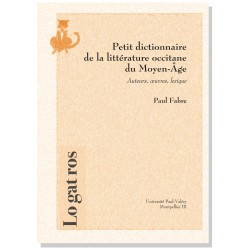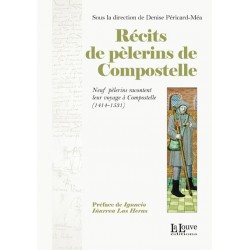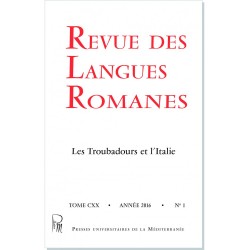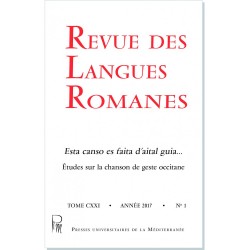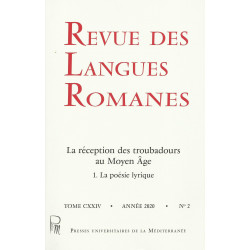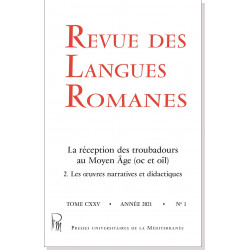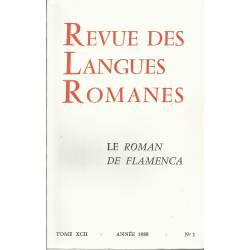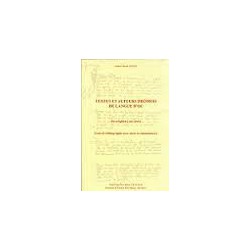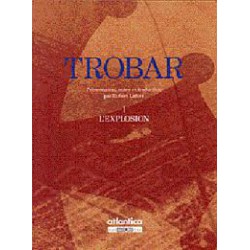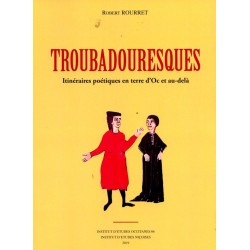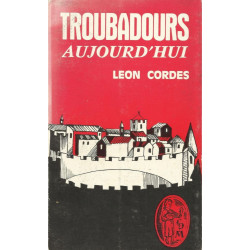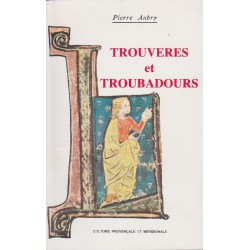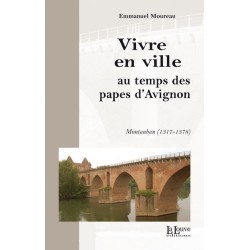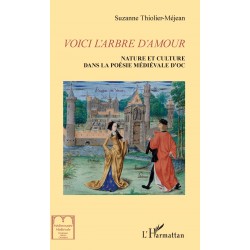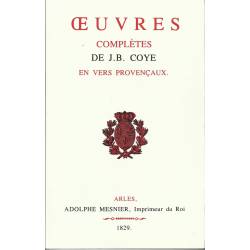Recently added item(s)
No products
Product successfully added to your shopping cart
There are 0 items in your cart. There is 1 item in your cart.
Troubadours
- New Selection
- Books
- Music
- Videos - DVD
- Miscellaneous
- Revues, Journaux
Specials
-

Viatges - La Bugade
16,00 € -33.33% 24,00 €
Links

Troubadours
Books about troubadours, men and women, whether Occitan or not.
A troubadour (trobador) was a composer and performer of Old Occitan lyric poetry during the High Middle Ages (1100–1350). Since the word troubadour is etymologically masculine, a female troubadour is usually called a trobairitz.
The troubadour school or tradition began in the late 11t...
Books about troubadours, men and women, whether Occitan or not.
A troubadour (trobador) was a composer and performer of Old Occitan lyric poetry during the High Middle Ages (1100–1350). Since the word troubadour is etymologically masculine, a female troubadour is usually called a trobairitz.
The troubadour school or tradition began in the late 11th century in Occitania, but it subsequently spread into Italy and Spain. Under the influence of the troubadours, related movements sprang up throughout Europe: the Minnesang in Germany, trovadorismo in Galicia and Portugal, and that of the trouvères in northern France. Dante Alighieri in his De vulgari eloquentia defined the troubadour lyric as fictio rethorica musicaque poita: rhetorical, musical, and poetical fiction. After the "classical" period around the turn of the 13th century and a mid-century resurgence, the art of the troubadours declined in the 14th century and eventually died out around the time of the Black Death (1348).
The texts of troubadour songs deal mainly with themes of chivalry and courtly love. Most were metaphysical, intellectual, and formulaic. Many were humorous or vulgar satires. Works can be grouped into three styles: the trobar leu (light), trobar ric (rich), and trobar clus (closed). Likewise there were many genres, the most popular being the canso, but sirventes and tensos were especially popular in the post-classical period, in Italy and among the female troubadours, the trobairitz.
Per la lenga e la cultura d’Òc - Andrieu...
Per la lenga e la cultura d’Òc - Andrieu Lagarda, la fe en òbras. Un livre hommage à la longue vie d’enseignant et de militant pour la langue et la culture d’oc d'André Lagarde, pour mieux connaître son oeuvre foisonnante. Éditions Lambert-Lucas
15,00 €Petit dictionnaire de la littérature...
Petit dictionnaire de la littérature occitane du Moyen-Âge - Paul Fabre (Small dictionary of medieval Occitan literature). This work gives direct access to the old troubadours, whether they are well known or not, because it would be sad to let the name of a poet fall into oblivion. Lo gat ros. Presses Universitaires de la Méditérranée.
15,00 €RÉCITS DE PÈLERINS DE COMPOSTELLE - Denise...
Récits de pèlerins de Compostelle - Denise Péricard-Méa. Neuf pèlerins racontent leur voyage à Compostelle (1414-1531). La Louve éditions.
25,00 €Revue des Langues Romanes - Tome 120-1...
Tome 120-1 of the « Revue des langues romanes » (Journal dedicated to romanic literatures, languages and philology): The Troubadours & Italy, first volume of the year 2016 (PULM).
27,00 €Revue des Langues Romanes - Tome 121-1...
Tome 121 of the « Revue des langues romanes » (Journal dedicated to romanic literatures, languages and philology): Studies on the Occitan gesture song (chanson de geste occitane), first volume of the year 2017 (PULM).
27,00 €Revue des Langues Romanes - Tome 124-2...
Book 124-1 of the « Revue des langues romanes » (Dedicated to Romanic literature, languages and philology): « La Réception des troubadours au Moyen Âge. La Poésie lyrique » (number CXXIV n°2 - PULM).
27,00 €Revue des Langues Romanes - Tome 125-1...
Tome 125-1 of the « Revue des langues romanes » (Dedicated to romanic literature, languages and philology): « La Réception des troubadours au Moyen Âge (oc et oïl) » 2 - Les œuvres narratives et didactiques, sous la direction de Valérie Fasseur, first book of the year 2021 (number CXXV n°1 - PULM).
27,00 €Revue des Langues Romanes - Tome 92 (1988...
Revue des Langues Romanes - Tome 92 (1988 n°1)Tome 92 de la « Revue des langues romanes » (revue de linguistique, de littérature et de philologie romanes): "Le roman de Flamenca", premier volume de l'année 1988 (PULM).
21,00 €Textes et auteurs Drômois de Langue d'Oc...
Textes et auteurs Drômois de Langue d'Oc des origines à nos jours - Jean-Claude Rixte. Essai de bibliographie avec notes et commentaires. Daufinat-Provença, Tèrra d'òc. Institut d'Etudes Occitanes, Drôme.
15,00 €Trobar - Tome 1 - L'explosion - Robert Lafont
Trobar I L'explosion - Robert Lafont. Présentation, notes et traductions par Robert Lafont. Atlantica. Institut Occitan.
20,00 €Troubadouresques - Itinéraires poétiques...
Troubadouresques - Itinéraires poétiques en terre d'Oc, by Robert Rourret. Un voyage alphabétique original non seulement dans les communes du pays d’Oc où ont vécu des troubadours, mais aussi en Allemagne et en Italie. Avec de nombreuses photos. IEO 06.
29,00 €Troubadours aujourd'hui - Léon Cordes
Troubadours aujourd'hui - Léon Cordes. Trobadors al segle XX. C.P.M. Marcel Petit.
10,00 €Trouvères et troubadours - Pierre Aubry
Trouvères et troubadours - Pierre Aubry. Les maîtres de la musique. C.P.M. Marcel Petit.
15,00 €VOICI L'ARBRE D'AMOUR - Nature et culture...
VOICI L'ARBRE D'AMOUR - Nature et culture dans la littérature médiévale d'Oc - Suzanne Thiolier-Mejean. La fin'amor est un chant qui unit étroitement l'amour et la nature ; la poésie est la juste expression de cette relation intime. Éditions L'Harmattan.
39,00 €Œuvres Complètes - Jean-Baptiste Coye
Œuvres Complètes - Jean-Baptiste Coye. Collection Marcel Petit - CPM 1981.
13,00 €
 English
English Français
Français Occitan
Occitan

